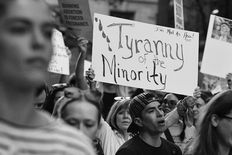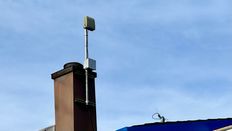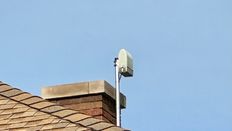Study: ShotSpotter has “no effect” on Chicago’s fatal shootings or arrest rates
A new study has found that ShotSpotter, a gunfire detection technology (GDT), does not live up to the benefits touted by the vendor and law enforcement. Among the study’s findings, ShotSpotter “did not translate to any meaningful improvements to crime control outcomes.” Initially marketed as a crime reduction system, ShotSpotter, now rebranded as SoundThinking, has […]
by People’s Fabric Feb 19, 2024
Share this article:
A new study has found that ShotSpotter, a gunfire detection technology (GDT), does not live up to the benefits touted by the vendor and law enforcement.
Among the study’s findings, ShotSpotter “did not translate to any meaningful improvements to crime control outcomes.”
Initially marketed as a crime reduction system, ShotSpotter, now rebranded as SoundThinking, has shifted its sales pitch to emphasize the potential for saving lives by enabling quicker police responses to shooting incidents.
But researchers found while police response times are faster in some circumstances, ShotSpotter’s deployment in Chicago “was associated with significantly higher levels of fatal shootings, non-fatal shootings, and gun assaults and robberies [emphasis added].”
While the analysis shows ShotSpotter does not statistically improve the number of shootings, fatalities, or arrests, Chicago spends $8 to $10 million per year on the technology.
The study, described as the “largest research project on gunshot detection technology (GDT) to date,” was funded by the National Institute of Justice, a federal government agency, and conducted with the cooperation of Chicago and Kansas City’s police departments.
Chicago
When responding to a shots-fired call detected by ShotSpotter, Chicago police officers, upon nearing the scene within 500 meters (equivalent to three to four city blocks), arrived approximately ten seconds faster on average compared to responding to a 9-1-1 call. Additionally, officers stopped their vehicles about 13 feet closer to the location indicated by ShotSpotter alerts.
However, the study found that officers were, on average, three seconds slower to respond to fatal shootings when alerted by ShotSpotter as opposed to a 9-1-1 call.
When there was no shooting victim, Chicago police never stopped their car at the location of 26% of ShotSpotter alerts. Chicago’s Office of the Inspector General found that 91% of ShotSpotter alerts do not result in any evidence of a gun-related crime.
It’s important to note that the study did not analyze the total response time from alert or call receipt to officer arrival. Factors such as police call prioritization, 9-1-1 call backlogs, and other factors that could influence dispatch timing were not factored into the response times.
For instance, consider the case of police officer Areanah Preston’s tragic death. Despite a ShotSpotter alert indicating the location of the incident, no help arrived for over 30 minutes. It wasn’t until nearly 20 minutes later, when Preston’s Apple Watch triggered an emergency 9-1-1 alert, that emergency services were dispatched.
In this study, such a call might have been categorized as a police “response” within a couple of minutes, as it only examines the time police identify the correct location once they are already in the vicinity of the scene.
Despite somewhat improved speed and accuracy, the study found ShotSpotter had “no effect” on fatal shootings or non-fatal shootings in Chicago compared to the study’s weighted control areas without the technology.
When controlling for crime rates before ShotSpotter was implemented, population density, demographics, income, CCTV presence, and other factors, the study revealed that the number of fatal shootings actually increased as Chicago expanded its ShotSpotter rollout.
Additionally, the study found no significant improvement in outcomes related to evidence collection and arrests.
While Chicago police are 45% more likely to find evidence at the scene of fatal shootings in areas with ShotSpotter, there was no improvement in arrest rates. For non-fatal shootings, ShotSpotter had no material effect on evidence collection.
These findings align with at least two other studies of ShotSpotter deployments in different cities, as referenced in this report, which also found no statistical improvement in arrest rates following ShotSpotter deployments.
The study yielded mixed results regarding the number of firearms recovered. Across the ten phases of Chicago’s ShotSpotter rollout, six phases showed no increase in gun recoveries, one phase resulted in fewer gun recoveries, and three phases saw significant increases in gun recoveries.
Researchers suggested the disparities observed across police districts may be attributed more to “unique leadership strategies” and approaches than technology.
The Civilian Office of Police Accountability is currently investigating a crew of 5th District officers who are accused of unlawfully seizing several firearms. In at least one instance, officers credited ShotSpotter with the falsely reported firearm recovery.
Kansas City
In Kansas City, the impact of ShotSpotter on the police’s ability to pinpoint locations exhibited mixed results. Upon receiving a ShotSpotter alert, officers responded to fatal shootings approximately four minutes faster. However, they were 45 seconds slower to arrive at the scene of non-fatal shootings compared to when responding to 9-1-1 calls.
ShotSpotter alerts were 18% more likely to be closed as unfounded, indicating a lack of corroborating evidence such as property damage, shell casings, or witnesses confirming gunfire, in comparison to resident calls reporting gunfire.
The study found this outcome matches previous research indicating that ShotSpotter “may increase police responses to false-positive gunfire events.”
Similar to findings in Chicago, researchers observed that ShotSpotter in Kansas City was “not significantly associated” with any improvement in the rates of non-fatal or fatal shootings, nor did it lead to a corresponding increase in arrests.
The study was conducted by investigators from Northeastern University, Boston College, Indiana University–Purdue University Indianapolis and others.
Launched in 2019, the group analyzed more than a decade of crime and gunshot detection data from Chicago and Kansas City to determine the effects of GDT on officer response times, the collection of evidence, the occurrence of gun crimes, and case closure rates.
The study concludes, “Given the high cost of the technology… [c]ontinuing upon the current pace of GDT adoption in policing should perhaps be contingent upon the field gaining a better understanding of exactly how to deploy and integrate GDT in a manner that maximizes the likelihood of success.”
The publication of this study comes amid Chicago Mayor Brandon Johnson’s decision to extend the city’s contract with ShotSpotter until September 2024, with an additional two-month transition period to decommission the technology.
The cost of the latest extension is unknown, but Chicago has spent at least $49 million on ShotSpotter since it’s initial deployment.
About this story
Topics:
Related Stories
-

Welcome to the reconfiguration
Welcome to Unraveled.
-

CPD ShotSpotter “Lives Saved” list includes at least one dead man, other misleading wins
Records show the Chicago Police Department has misrepresented the extent of the technology’s role in providing aid to gunshot victims.
-

CPD sends error-ridden ShotSpotter report to City Council
The data includes over 12,000 events where police response times were zero or negative.